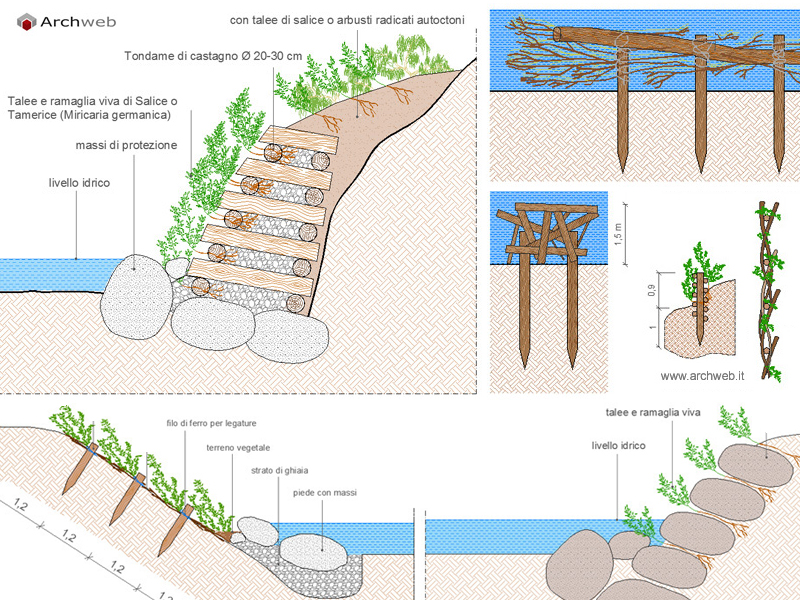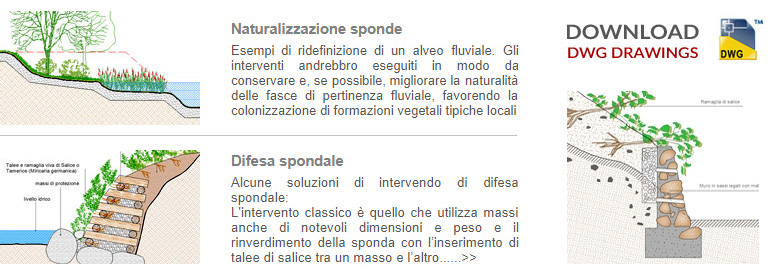Naturalistic engineering
Building with plant material

Naturalistic Engineering is a technical-scientific discipline that studies the methods of use, as a building material, of live plant material (plants or parts of them)in combination with other inert materials non-cementitious quali stone, earth, timber, steel, as well as in conjunction with mats in vegetable or synthetic fibers.
The historical scope of application of this discipline is the prevention of hydrogeological instability and therefore the matter finds wide application in the operations of consolidation, stabilization, hydraulic, drainage and renaturalization of the land with a view to protection from erosion, development of natural environments, as well as safeguarding the landscape and mitigation of the environmental impact in order also to reintegrate places and infrastructures.
When dealing with a Naturalistic Engineering operation, there are some recurring elements that are used, which differ from more traditional interventions.
It begins with the analysis of the topographic and climatic characteristics of each surface subject to intervention, the soil is then examined in relation to the chemical, physical and hydrological, and geomorphological characteristics; a phase of floristic and vegetative study follows, paying attention to the possible presence of rare botanical species and seeds, and also evaluating the biotechnical characteristics of the species themselves, their capacity and speed of growth, of adaptation to the environment, and also to the possible availability on the market.
We then move on to assessing any presence of existing infrastructures. After this first analysis we arrive at the study of the use of the new materials that will be used, with the relative selection of the plant species to be used and possible grassy sod transplants. Then the type of environmental and naturalistic reintegration is evaluated, trying to improve the area by masking the artificial elements of the work.
Among the advantages of the methods used by Naturalistic Engineering are ……..READ THE FULL ARTICLE >>
Sources and useful links:
http://www.isprambiente.gov.it/it
 Interventi idraulici ittiocompatibili – linee-guida (25.2 Mb)
Interventi idraulici ittiocompatibili – linee-guida (25.2 Mb)


































































